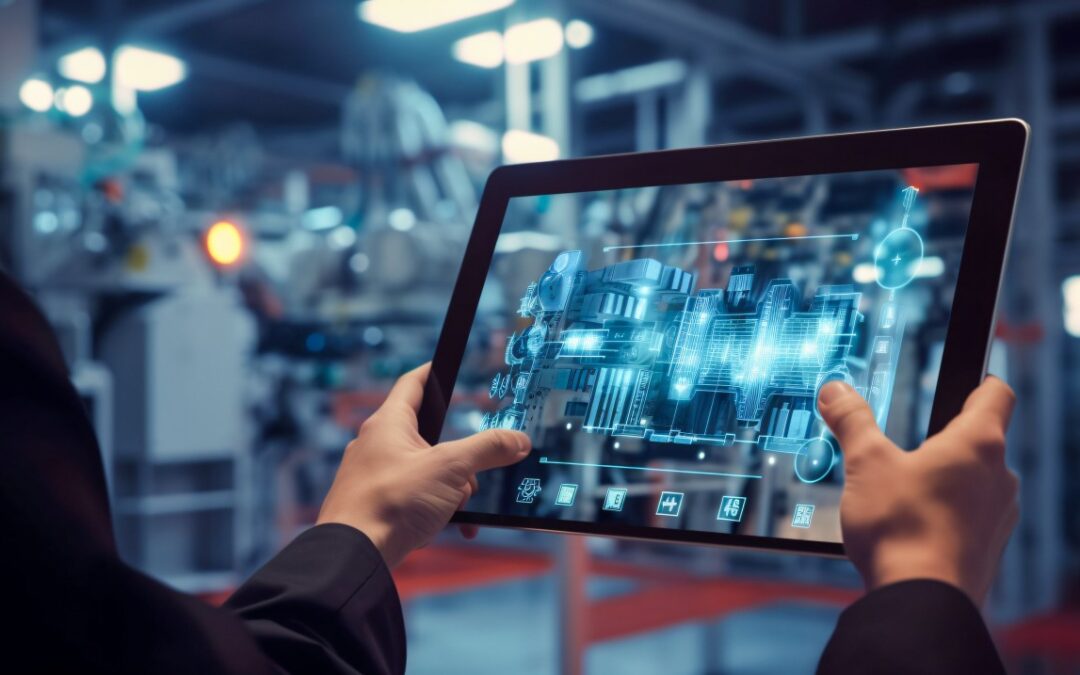In the world of quality assurance, ensuring product integrity is paramount. One innovative method that’s gaining significant traction is stroboscopic lighting in inspections. This technique leverages the power of stroboscopic effects to facilitate precise and effective inspections, particularly in industrial settings.
By utilizing stroboscopic lighting, inspectors can identify defects and irregularities with greater accuracy and efficiency. This method not only enhances the inspection process but also contributes to the overall quality of the products being evaluated. This article delves into how stroboscopic lighting is revolutionizing the inspection industry, providing insights into its applications and benefits.

What is Stroboscopic Lighting?
Stroboscopic lighting is a technique that uses flashes of light at regular intervals to create a slow-motion effect. This effect is highly beneficial in industrial inspections as it allows inspectors to view fast-moving parts as if they are stationary. This capability is crucial in identifying defects that may not be visible at full speed.
How Does Stroboscopic Lighting Work?
The basic principle behind stroboscopic lighting is synchronization. The strobe light is synchronized with the movement of the part being inspected. By matching the flash rate with the movement speed, the part appears stationary, allowing for detailed examination.
Applications of Stroboscopic Lighting in Inspections
Stroboscopic lighting is used across various industries for different inspection purposes. It plays a crucial role in sectors such as manufacturing, automotive, and aerospace, where precision is essential.
Manufacturing Industry
In manufacturing, ensuring product consistency and quality is vital. Stroboscopic lighting is employed in assembly lines to inspect components for defects. This method allows for continuous operation without having to stop the machines, thereby increasing productivity.
Automotive Industry
In the automotive sector, stroboscopic lighting assists in inspecting rotating parts such as gears and engines. This method helps detect any anomalies that could lead to malfunctions, ensuring vehicles meet safety standards.
Aerospace Industry
The aerospace industry demands the highest levels of precision. Stroboscopic lighting is used to inspect aircraft components, ensuring they are free from defects and capable of withstanding extreme conditions.
Benefits of Stroboscopic Lighting in Inspections
Stroboscopic lighting offers numerous advantages, making it a preferred choice for inspections in various industries.
Enhanced Accuracy
The ability to view fast-moving parts as stationary allows for more accurate inspections. This precision helps in identifying defects that might otherwise go unnoticed.
Increased Efficiency
Since inspections can be carried out without halting operations, stroboscopic lighting enhances efficiency, reducing downtime and increasing productivity.
Cost-Effectiveness
Although the initial investment might be higher, the long-term savings in operational costs and improved product quality make stroboscopic lighting a cost-effective solution.
Implementing Stroboscopic Lighting in Inspections
For businesses looking to implement stroboscopic lighting in their inspection processes, understanding the technical aspects is crucial. This includes selecting the right equipment and ensuring proper synchronization.
Choosing the Right Equipment
Not all stroboscopes are created equal. It’s important to select equipment that suits the specific requirements of the inspection process. Factors to consider include flash rate, intensity, and ease of synchronization.
Ensuring Synchronization
Synchronization is key to successful inspections using stroboscopic lighting. Proper synchronization ensures that the flash rate matches the movement speed, providing a clear view of the part being inspected.
Challenges and Solutions
While stroboscopic lighting offers many benefits, there are challenges to be aware of, such as the potential for operator fatigue and the need for specialized training.
Operator Fatigue
The repetitive flashing of strobe lights can cause fatigue for operators. To mitigate this, it’s important to ensure that operators take regular breaks and that the work environment is well-lit and comfortable.
Specialized Training
Operators must be trained to use stroboscopic lighting effectively. This training should cover equipment operation, synchronization techniques, and safety precautions.
The Future of Stroboscopic Lighting in Inspections
As technology advances, the applications and capabilities of stroboscopic lighting in inspections are expected to grow. Developments in synchronization technology and the integration of artificial intelligence hold promise for even more precise and efficient inspections.
Integration with AI
Combining stroboscopic lighting with AI can enhance inspection capabilities by allowing for real-time data analysis and defect detection. This integration is expected to lead to even higher levels of accuracy and efficiency.
Advancements in Synchronization Technology
New synchronization technologies are being developed, allowing for more precise control of flash rates and improved inspection outcomes.
Conclusion
In conclusion, stroboscopic lighting in inspections is transforming the way industries approach quality assurance. By providing enhanced accuracy, efficiency, and cost-effectiveness, this method is set to become a staple in inspection processes across various sectors. As technology continues to evolve, the future of stroboscopic lighting looks bright, promising even greater advancements in inspection capabilities.

FAQs
What industries benefit the most from stroboscopic lighting?
Industries such as manufacturing, automotive, and aerospace benefit greatly from stroboscopic lighting due to their need for precise inspections of fast-moving components.
How does stroboscopic lighting improve inspection accuracy?
By creating the illusion of stationary parts, stroboscopic lighting allows inspectors to identify defects more accurately, leading to higher quality products.
Is specialized training required to use stroboscopic lighting?
Yes, operators need specialized training to effectively use stroboscopic lighting, including understanding equipment operation and synchronization techniques.
For more information on the applications and benefits of stroboscopic lighting, visit SKF’s stroboscopes. Additionally, explore how stroboscopic lighting compares to other methods and learn about minimizing machine failure risk.
This article contains affiliate links. We may earn a commission at no extra cost to you.
